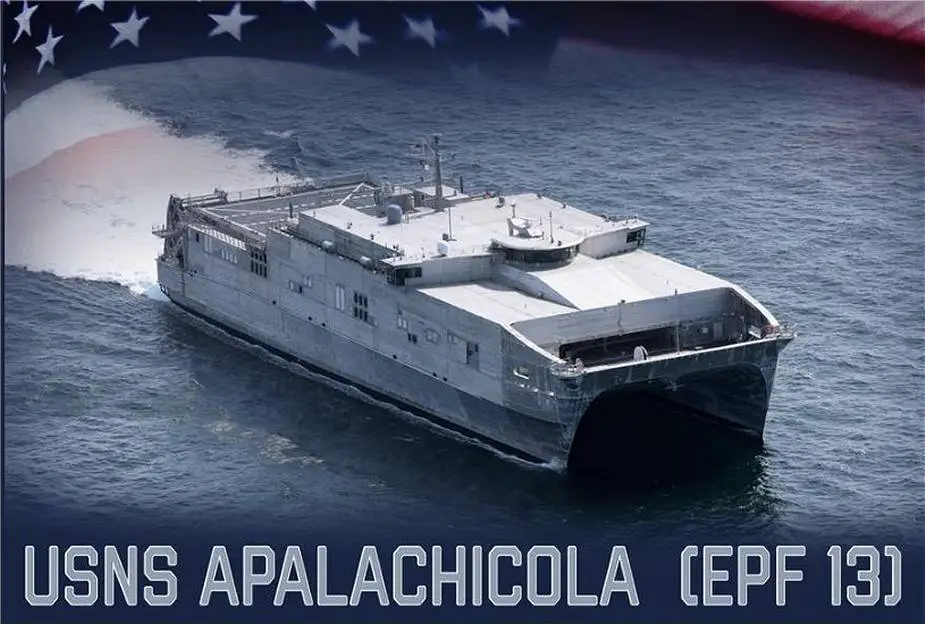Breaking news
US Navy to christen future USNS Apalachicola T-EPF 13 Spearhead-class expeditionary fast transport ship.
According to information published by the United States Department of Defense, the U.S. Navy christens its thirteenth Spearhead-class expeditionary fast transport, the future USNS Apalachicola (T-EPF 13), during a ceremony on Saturday, November 13 in Mobile, Ala.
Follow Navy Recognition on Google News at this link
 Drawing of the future USNS Apalachicola T-EPF 13 expeditionary fast transport ship. (Picture source U.S. Navy)
Drawing of the future USNS Apalachicola T-EPF 13 expeditionary fast transport ship. (Picture source U.S. Navy)
The future USNS Apalachicola is the thirteenth ship in its class and will be operated by the Navy’s Military Sealift Command. The ship is named in honor of the city of Apalachicola, Fla., and will be the second U.S. Navy ship to bear that name.
The USNS Apalachicola (T-EPF-13) will be the thirteenth Spearhead-class expeditionary fast transport and will be operated by the U.S. Military Sealift Command, an organization that controls the replenishment and military transport ships of the United States Navy.
The Spearhead-class is a series of Expeditionary Fast Transport (EPF) ships built by the company Austal USA as part of the EPF program initiated by the US Navy. The goal of the Expeditionary Fast Transport (EPF) shipbuilding program is to provide high-speed, shallow draft transportation capability to support the intra-theater maneuver of personnel, supplies, and equipment for the U.S. Navy, Marine Corps, and Army.
The EPF is designed to transport 600 short tons 1,200 nautical miles (2,225 km) at an average speed of 35 knots (65 km/h) in sea state 3. The ships are capable of operating in shallow-draft ports and waterways, interfacing with roll-on/roll-off discharge facilities, and on/off-loading a combat-loaded Abrams Main Battle Tank (M1A2). The EPF includes a flight deck for helicopter operations and an off-load ramp that allows vehicles to quickly drive off the ship. The ramp is suitable for the types of austere piers and quay walls common in developing countries.
The EPF is an aluminum twin-hull catamaran shell containing four diesel engines, rudimentary facilities for up to 40 crewmembers, and 312 airline-style passenger seats. The vessel has a length of 103 m, a beam of 28.5 m and a draft of 3.83 m and a displacement of 1,515 tons. EPF is powered by four MTU 20V8000 M71L diesel engines driving four Wartsila WLD 1400 SR waterjets via four ZF 60000NR2H reduction gears. She can reach a maximum speed of 43 knots (80 km/h) with a maximum cruising range of 1,200 nautical miles (2,200 km).


























